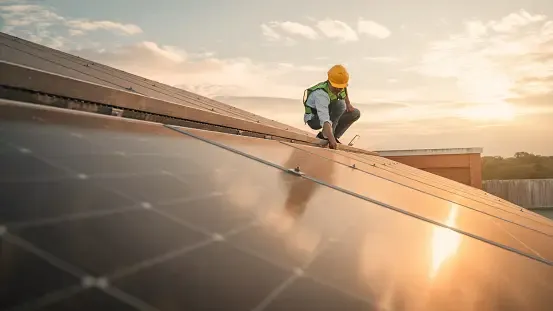
CONTACT US
What is a Virtual Power Plant?
In the rapidly evolving world of energy, the concept of a Virtual Power Plant (VPP) is gaining significant attention. But what exactly is a virtual power plant, and how does it work? In this blog, we'll break down the basics of VPPs, explain their benefits, and explore how they are transforming the energy landscape. By the end, you'll have a clear understanding of what a virtual power plant is and why it matters.
What is a Virtual Power Plant?
A Virtual Power Plant is a network of decentralized power-generating units such as solar panels, wind turbines, and battery storage systems. These units are interconnected and coordinated using advanced software to operate as a single power plant. Unlike traditional power plants, which are centralized and rely on fossil fuels, VPPs leverage renewable energy sources and distributed energy resources (DERs).
How Do Virtual Power Plants Work?
At the heart of a VPP is sophisticated software that monitors and manages the performance of various energy sources. This software aggregates the output of the individual units and optimizes their operation to meet energy demand in real-time. By doing so, VPPs can balance supply and demand more efficiently, reduce reliance on fossil fuels, and enhance grid stability.
The Components of a Virtual Power Plant
Distributed Energy Resources (DERs): These include solar panels, wind turbines, battery storage systems, and other renewable energy sources. Each DER contributes to the overall power generation of the VPP.
Energy Management System (EMS): The EMS is the brain of the VPP. It uses advanced algorithms and data analytics to monitor, control, and optimize the performance of the DERs.
Communication Infrastructure: This ensures seamless communication between the EMS and the DERs, enabling real-time data exchange and coordination.
Benefits of Virtual Power Plants
- Enhanced Grid Stability: VPPs can respond quickly to fluctuations in energy demand and supply, helping to maintain grid stability and prevent blackouts.
- Increased Renewable Energy Integration: By aggregating the output of multiple renewable energy sources, VPPs facilitate the integration of more renewable energy into the grid.
- Cost Savings: VPPs can reduce operational costs by optimizing energy production and consumption, thus lowering electricity prices for consumers.
- Reduced Carbon Footprint: By relying on renewable energy sources, VPPs contribute to reducing greenhouse gas emissions and combating climate change.
Real-World Examples of Virtual Power Plants
Australia’s AGL Energy: AGL Energy operates one of the world’s largest VPPs, which integrates thousands of residential solar panels and battery storage systems to provide reliable and sustainable energy.
Germany’s Next Kraftwerke: This VPP connects various small-scale energy producers and consumers across Europe, optimizing their operations and contributing to grid stability.
Tesla’s Virtual Power Plant in South Australia: Tesla has implemented a VPP in South Australia, connecting solar panels and Powerwall batteries in homes to create a distributed network of energy resources.
Challenges and Future Prospects
While VPPs offer numerous benefits, they also face challenges such as regulatory hurdles, cybersecurity risks, and the need for significant investment in communication infrastructure. However, as technology advances and regulatory frameworks evolve, the potential for VPPs to revolutionize the energy sector is immense.
Conclusion
Virtual Power Plants represent a significant leap forward in how we generate, distribute, and consume energy. By leveraging renewable energy sources and advanced software, VPPs offer a sustainable, efficient, and cost-effective solution to the challenges facing our energy systems. As we continue to transition towards a more sustainable future, the role of VPPs in our energy landscape will only grow in importance.



